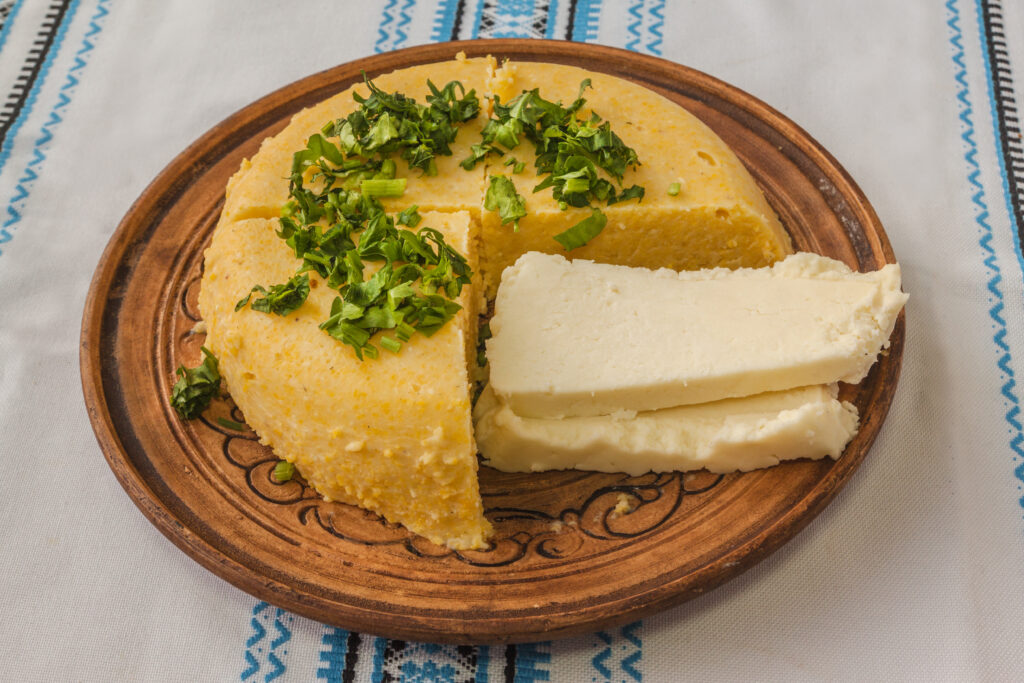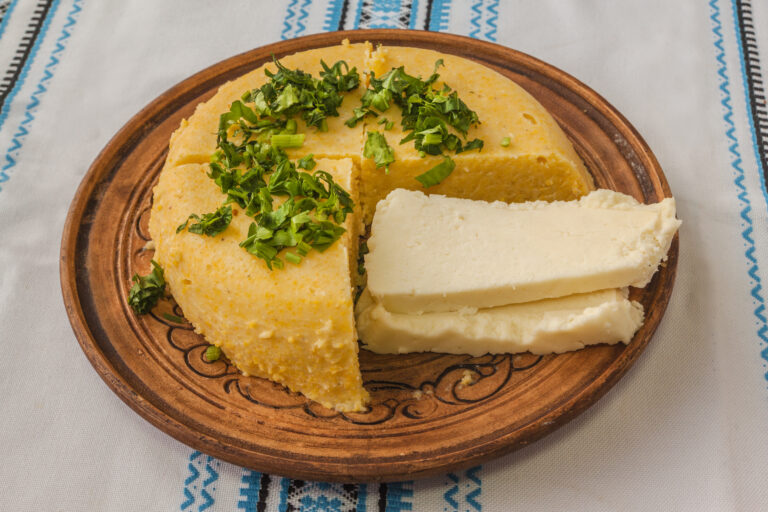Mămăligă, a dish deeply rooted in Moldovan culture. This humble cornmeal porridge has been nourishing the people of Moldova for centuries, its simplicity belying its significance.
Our team at Remitly created this guide for you as part of our series that celebrates the traditional foods of our global customers. Let’s dive in!
The History of Mămăligă in Moldova
Mămăligă’s history in Moldova stretches back to when maize was first introduced to Europe from the New World. As an affordable and versatile crop, it quickly became a staple food for peasants.
Mămăligă emerged as a simple yet filling dish that could be prepared with minimal ingredients.
Over time, it gained prominence beyond the peasant class. It became appreciated across all social strata for its comforting taste and versatility. Today, it holds a cherished place in Moldovan cuisine and culture.
Ingredients and Preparation of Mămăligă
The beauty of mămăligă lies in its simplicity. At its core, it requires only three ingredients: cornmeal, salt, and water. The cornmeal is slowly stirred into boiling salted water until it thickens into a creamy consistency.
Despite this simplicity, preparing mămăligă requires patience and skill. The mixture must be stirred continuously to prevent lumps from forming. Once cooked, it can be served immediately or allowed to cool and solidify before being cut into slices.

A Simple Mămăligă Recipe for You
Mămăligă is a dish that’s easy to prepare, requiring only a few basic ingredients. Here’s a simple recipe you can try at home.
Ingredients:
- 1 cup of cornmeal
- 4 cups of water
- 1 teaspoon of salt
Instructions:
- Bring the water to a boil in a large pot.
- Add the salt and slowly whisk in the cornmeal, ensuring it doesn’t clump together.
- Reduce the heat to low and continue stirring until the mixture thickens. This process may take up to 30 minutes.
- Once thickened, remove from heat and let it cool slightly before serving.
Remember, mămăligă is versatile—feel free to add your favorite toppings or pairings like cheese, sour cream, or traditional Moldovan stews.
Variations of Mămăligă Across Regions
While the basic recipe remains consistent, regional variations of mămăligă abound throughout Moldova and neighboring countries like Romania.
Some regions enrich their mămăligă with cheese or sour cream while others prefer it plain.
In some areas, mămăligă is used as an edible bowl filled with hearty stews or meats—a testament to its versatility.
Traditional Serving Methods for Mămăligă
Traditionally, mămăligă is served on a wooden board or directly on the tablecloth. It’s often cut with a string rather than a knife to preserve its texture. In some households, it’s even used as a substitute for bread.
When served as a main dish, mămăligă is typically accompanied by toppings like cheese, sour cream, or traditional Moldovan stews. Its neutral flavor makes it an excellent canvas for showcasing the rich flavors of other dishes.
Common Pairings with Mămăligă
Mămăligă pairs well with many foods but is most commonly enjoyed with dairy products and meat dishes. A slice of mămăligă topped with crumbled brânzǎ (a type of sheep’s milk cheese) and smântânǎ (sour cream) is a classic combination.
For meat lovers, mămăligă serves as the perfect accompaniment to sarmale (cabbage rolls filled with minced meat) or tochiturǎ (a hearty meat stew). The creamy cornmeal porridge provides balance to these robustly flavored dishes.
Exploring Moldovan Cuisine
Moldovan cuisine is as diverse as its history, influenced by neighboring countries like Romania, Ukraine, and Turkey. It’s characterized by hearty dishes made with locally sourced ingredients.
Popular Dishes in Moldova
Aside from mămăligă, other popular dishes include sarmale, a regional delicacy (cabbage rolls filled with minced meat), plăcintă (a pastry filled with cheese or fruit), and zeamǎ (a chicken soup with noodles). These dishes reflect Moldova’s agricultural roots and reliance on fresh produce.
Wine Culture in Moldova
Moldova is also well known for its wine culture—it’s one of the largest wine producers in Eastern Europe. The country boasts numerous vineyards where visitors can sample various wines and learn about their production process.
Traditional Desserts
Desserts are an integral part of Moldovan cuisine too. Placinte cu mere (apple pie) and gogosi (doughnuts) are often enjoyed treats after meals or during celebrations.
The Influence of Seasonality
Seasonality plays a significant role in Moldovan cuisine. Dishes are often prepared based on what ingredients are available during different times of the year. This approach ensures that food is always fresh and flavorful.
Moldovan cuisine, like its mămăligă, is a testament to the country’s rich cultural heritage and agricultural abundance. It offers a unique blend of flavors that are sure to delight any palate.
Visit the homepage, download our app, or check out our Help Center to get started.
